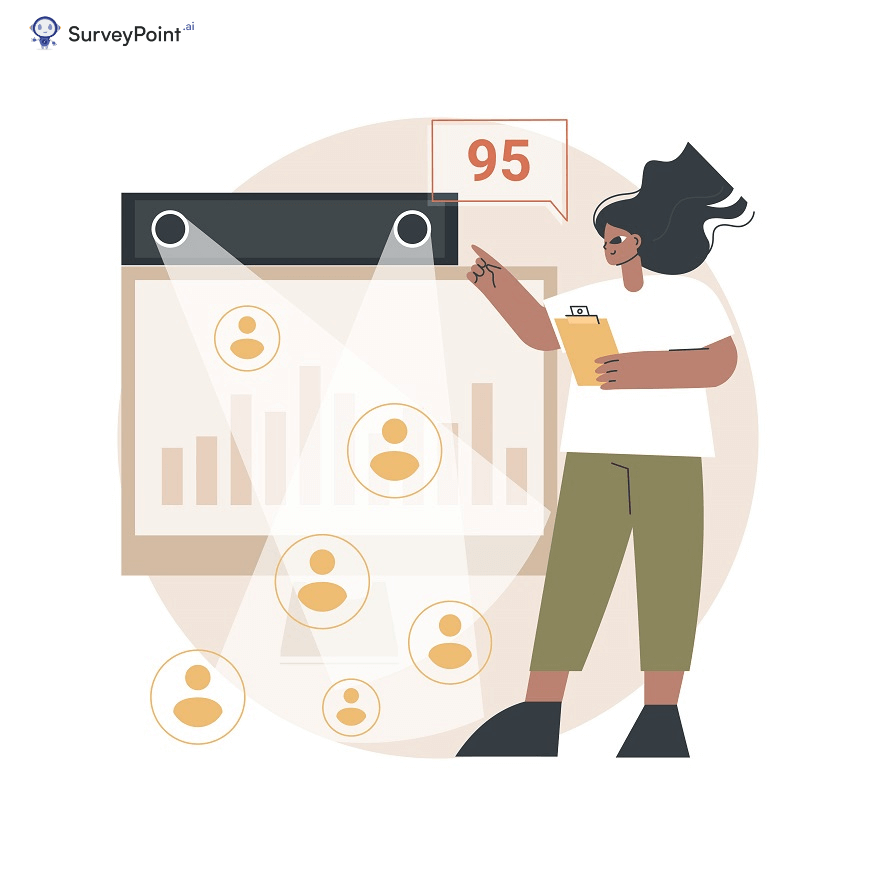
Sampling is a crucial stage that falls within the conduct of the survey in research. A survey can be understood as a question-answer round between the researcher and the respondents where the questions aim to discover or understand a phenomenon. One must explore multistage sampling advantages and application to understand its nuances better.
Surveys are usually conducted to understand the opinions and ideologies of a large public, but the whole population is never surveyed.
No researcher can survey thousands and lakhs of people. The interview process will require a large amount of manpower. Next, analyzing, interpreting, and presenting the data in information form for such a large pool population is a difficult task.
Let’s dive in and understand what precisely multistage sampling is and how it benefits you!
Understanding Multistage Sampling Advantages and Application
Surveys are conducted with a sample to reduce the man force and other resource expenses and save time. A sample refers to a significantly low number of people as selected so that the sample’s representation is true to the demographic attributes of the population.
As an example, if a survey is needed to determine how many girls feel safe leaving their homes after 10 PM, then only girls should be surveyed. Moreover, girls from different backgrounds should be included in the sample to understand the situation better.
Various Kinds of Sampling
A researcher can undertake the sampling procedure in a variety of ways. It’s crucial to keep in mind that sampling is a scientific procedure; you can’t just pick out any 10 drivers and take samples from them.
Depending on the likelihood of selecting each sample piece, sampling can be roughly divided into probability sampling and non-probability sampling.
- Probability Sampling:
In this sampling technique, randomly picking participants is done, ensuring a fair chance for each individual to be chosen. Probability sampling is often considered a reliable method as it prevents possible biases and allows an equal chance of participant selection.
- Non-probability Sampling:
Non-probability sampling is not based on a random selection of participants. This often leads to biased choosing of members and takes away their fair chance of selection.
This kind of sampling technique is particularly useful when the population is heterogeneous in nature. Research can also rely on non-probability sampling when compiling the list of the population is demanding.
Must Read: Probability And Non-Probability Sampling: Definition And Key Difference A Closer Look at Multistage Sampling
Multistage sampling refers to the sampling in which combinations of probability and non-probability sampling or multiple ways of either kind are clubbed together to reach the ultimate sample.
Simply put, when two or more sampling techniques are applied to draw samples from a population at multiple steps, it is known as multistage sampling.
- Suppose a college fest is to be conducted in college A, and the organizing committee wants to survey to understand what the students want for the fest. They first want to know people’s opinion on a prom night and how to make it safer for the student community.
- To draw a sample, they can first divide people into boys, girls, and LGBTQ communities to address each community’s problems. Next, they can divide the people into people living on campus and those living outside campus to know the convenient timing.
- Then they further bifurcate the population based on physically able and disabled people. Next, they take the required number of people from each category to understand the college’s mood better. This is often an effective multistage sampling example for you to understand better.
Application of Multistage Sampling

Multistage sampling is suited for surveys where the demographics of the populations are highly diverse. It helps the researcher club people into smaller units where their identities have the least possibility of any overlaps.
If, in the above example, the sample was just divided based on gender, other differences would not have factored in. If, amongst the girls, only residents had been included in the sample, the timings of the prom could have been set at 9 PM the night. This time, however, would not have suited girls residing outside campus or even some boys.
Hence, multistage sampling provides a clearer picture of the differences between the elements of the population.
ALSO READ: Maximizing Your Survey Results: How to Identify Survey Target Audience Advantages of Multistage Sampling
Multistage sampling allows the freedom of the researcher to choose the kind of sampling technique they want. They can reduce the sample size to the minimum possible value for a better representative sample. It is easier for the enumerator to approach the sampled elements.
It is cost-effective and less time-consuming because the enumerators now have to reach a lesser number of people. It also implies that the number of enumerators to be roped in will be lesser. When conducting multistage sampling, it is easier to skip elements about whom there is not enough information.
ALSO READ: Judgmental Sampling: An Effective but Less-talked Method How to Conduct Multistage Sampling?
Multistage sampling must be conducted in a systematic manner to get the most accurate results. Follow the below steps to carry out the process with ease:
- Finding the right people to study is the first stage in every research project. For example, to understand the changes in the village economy over the years, a survey must be conducted in a different setting.
- Then the researcher needs to locate the possible points of differences that will matter to the research. There can be multiple points of difference, but the researcher needs to narrow down the most important ones.
- The next and last step is to choose the required number of elements from each unit formed.
One must kickstart with multistage sampling with a clear objective and a well-outlined process. This helps you better understand multistage sampling advantages and application and use it for your research. When leveraged correctly, you can make the most of your data using this technique.
Not Sure Where To Begin?
Explore our solutions to discover what is most important to your customers,
clients, and prospects. And best of all – it doesn’t take any coding!
Free Trial • No Payment Details Required • Cancel Anytime




